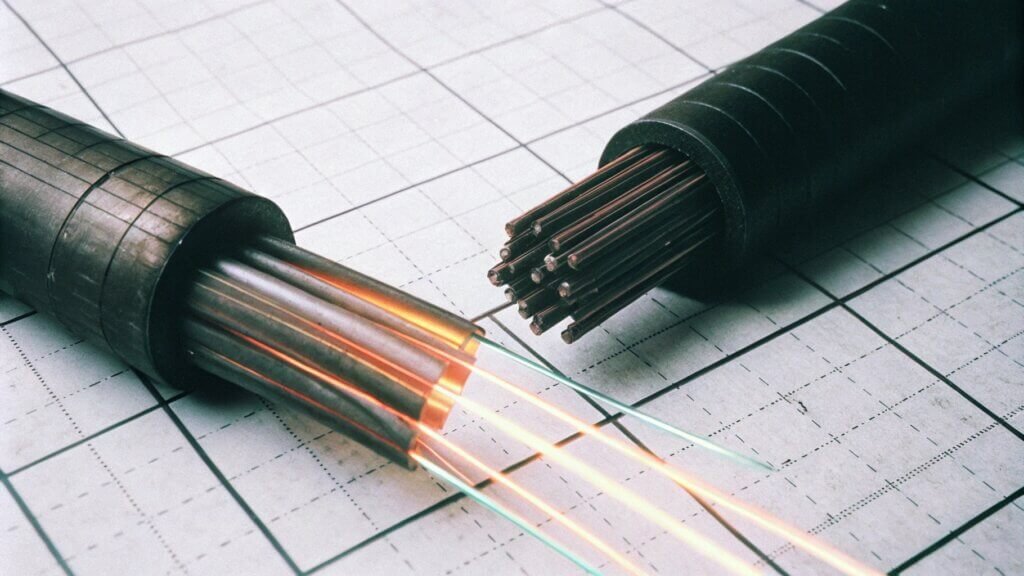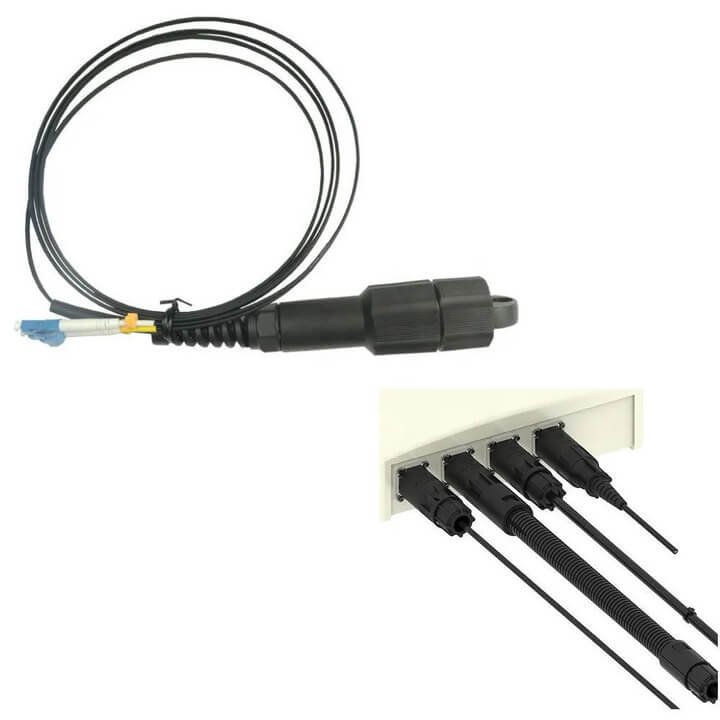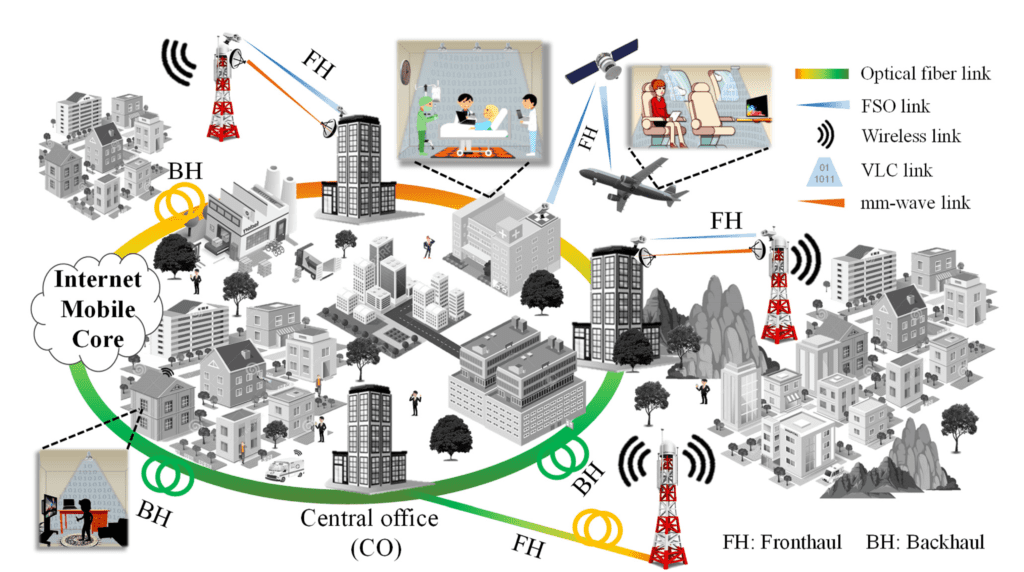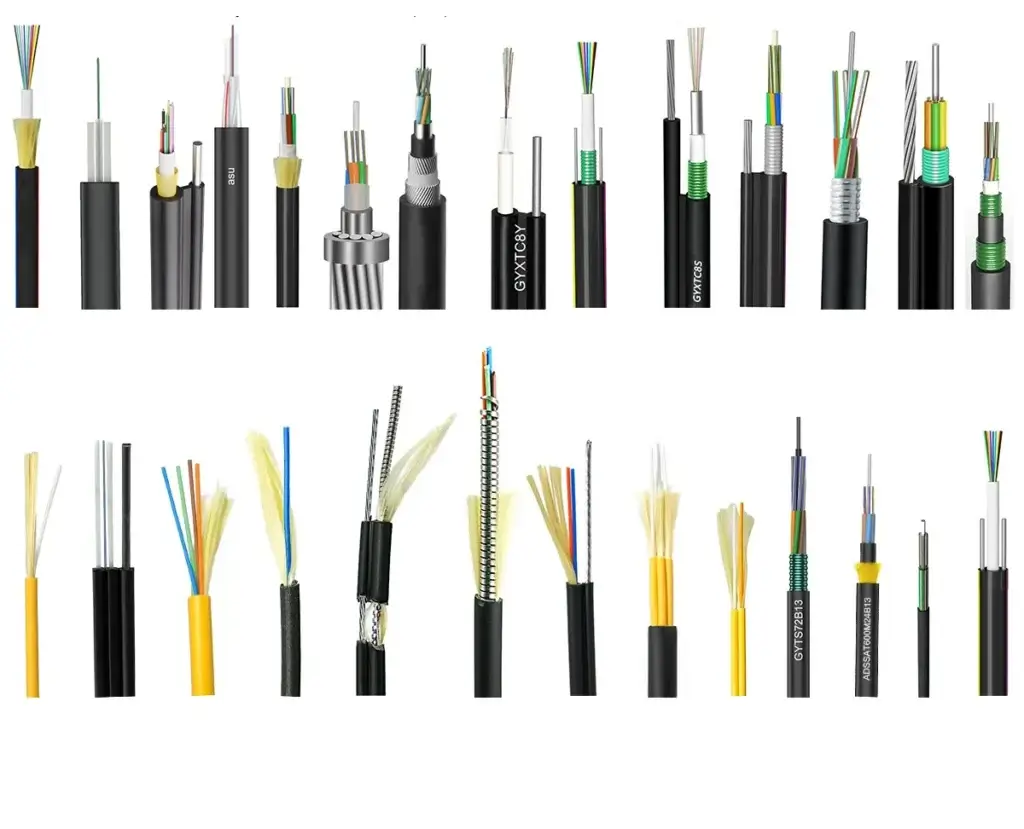How Are Fiber Optic Cables Applied in the Power Industry?

Are you looking to enhance the efficiency and reliability of your electrical power systems? Integrating fiber optic cables into power infrastructure can revolutionize data transmission1 and power distribution. Without the right solutions, your power systems may face inefficiencies and communication issues.
Fiber optic cables play a crucial role in the power industry by enabling high-speed data transmission and reliable communication, essential for modern electrical power systems.
Imagine a power grid where data flows seamlessly, monitoring systems operate flawlessly, and maintenance becomes more efficient. Achieving this requires advanced fiber optic solutions tailored for the power sector. Let's delve into how fiber optic cables are transforming the power industry.
How Optical Fiber is Used in Electrical Power Systems?
Optical fiber technology has become indispensable in modern electrical power systems, enhancing communication and data management.
In electrical power systems, optical fiber cables facilitate high-speed data transmission for monitoring, control, and communication, ensuring efficient and reliable power distribution.
Monitoring and Control
Fiber optic cables enable real-time monitoring systems2 and control of power systems by transmitting data from various sensors and control units.
Communication Networks
They establish robust communication networks between different parts of the power grid, ensuring seamless data flow and coordination.
| Application | Fiber Optic Solution | Benefits |
|---|---|---|
| Real-Time Monitoring | SFP Modules, AOC Cable | High-speed data transmission |
| Control Systems | MPO/MTP Trunk Cable3 | Reliable and interference-free communication |
| Data Management | High-Density Patch Panel4 | Efficient data handling |
What Is a Hybrid Cable?
Hybrid cables combine different types of conductors to provide multiple functionalities within a single cable system.
A hybrid cable5 integrates both power and data transmission capabilities, streamlining infrastructure and reducing installation complexity in electrical power systems.

Components of Hybrid Cables
Hybrid cables typically include copper conductors for power and fiber optic strands for data, offering a versatile solution for integrated systems.
Advantages of Hybrid Design
The combined design minimizes the need for separate cables, saving space and reducing installation costs.
| Feature | Hybrid Cables | Traditional Separate Cables |
|---|---|---|
| Space Efficiency | High | Lower |
| Installation Cost | Reduced | Higher |
| Maintenance | Simplified | More Complex |
| Flexibility | Multi-functional | Single-purpose |
How Do Hybrid Cables Evolve?
The evolution of hybrid cables reflects the growing demand for integrated solutions in the power industry.
Hybrid cables have advanced to incorporate higher data capacities and enhanced power delivery, adapting to the increasing complexity of electrical power systems.

Technological Advancements
Improvements in fiber optic and copper technologies have enabled hybrid cables to support greater data rates and power levels.
Integration with Smart Grids
Hybrid cables are now integral to smart grid6 technologies, facilitating intelligent monitoring and automated control systems.
Evolution Timeline
| Stage | Development | Impact |
|---|---|---|
| Initial Design | Basic integration of copper and fiber optics | Combined functionalities |
| Advanced Features | Higher data rates and power capacities | Enhanced performance |
| Smart Integration | Compatibility with smart grid technologies | Intelligent system management |
How Do Hybrid Cables Work?
Hybrid cables operate by simultaneously transmitting power and data through their integrated conductors.
By combining copper and fiber optic strands, hybrid cables efficiently manage power distribution and data communication within a single infrastructure.

Power Transmission
Copper conductors in hybrid cables carry electrical power, ensuring reliable energy distribution across the system.
Data Transmission
Fiber optic strands handle data communication, providing high-speed and interference-free transmission for monitoring and control.
| Function | Conductor Type | Role |
|---|---|---|
| Power Delivery | Copper Conductors | Transmits electrical power |
| Data Communication | Fiber Optic Strands | Facilitates high-speed data transfer |
Why Do We Need Hybrid Cables?
Hybrid cables address the need for streamlined and efficient infrastructure in electrical power systems.
They reduce the complexity and cost of installing separate power and data cables, enhancing overall system reliability and performance.
Cost Efficiency
By combining multiple functionalities into one cable, hybrid cables lower material and installation costs.
Simplified Infrastructure
Fewer cables mean easier installation and maintenance, reducing the potential for errors and system failures.
Cost Comparison
| Aspect | Hybrid Cables | Separate Cables |
|---|---|---|
| Material Costs | Lower | Higher |
| Installation Time | Reduced | Increased |
| Maintenance Effort | Simplified | More Complex |
What Are the Main Hybrid Cable Types?
There are several types of hybrid cables, each designed to meet specific requirements in the power industry.
The main hybrid cable types include copper-fiber hybrids, aluminum-fiber hybrids, and multi-conductor hybrids, each offering unique benefits for power and data transmission.


Copper-Fiber Hybrid Cables
These cables combine copper conductors with fiber optic strands, providing both power and data capabilities in one.
Aluminum-Fiber Hybrid Cables
Aluminum conductors offer lightweight alternatives for power transmission, paired with fiber optics for data.
Hybrid Cable Types
| Hybrid Type | Composition | Use Case |
|---|---|---|
| Copper-Fiber Hybrid | Copper + Fiber Optic Strands | Power and data transmission |
| Aluminum-Fiber Hybrid | Aluminum + Fiber Optic Strands | Lightweight power and data systems |
| Multi-Conductor Hybrid | Multiple copper and fiber strands | Complex infrastructure needs |
How to Choose the Hybrid Cable?
Selecting the right hybrid cable involves evaluating your system’s specific power and data requirements.
Consider factors such as power capacity, data bandwidth, environmental conditions, and compatibility with existing infrastructure when choosing a hybrid cable.
Assessing Power and Data Needs
Determine the electrical load and data transmission rates your system requires to ensure the hybrid cable can meet these demands.
Environmental Considerations
Choose cables with appropriate shielding and durability for the environmental conditions where they will be installed.
Selection Criteria
| Criteria | Considerations |
|---|---|
| Power Capacity | Electrical load requirements |
| Data Bandwidth | Required data transmission rates |
| Environmental Factors | Temperature, moisture, interference |
| Compatibility | Integration with existing systems |
Where Can Hybrid Cables Be Used?
Hybrid cables are versatile and can be deployed in various settings within the power industry.
They are ideal for use in substations, smart grids, monitoring systems, and other applications where both power and data transmission are essential.
Substations
Hybrid cables streamline the infrastructure in substations by handling both power distribution and data communication.
Smart Grids
In smart grid applications, hybrid cables facilitate intelligent monitoring and control, enhancing grid efficiency and reliability.
Application Areas
| Application | Hybrid Cable Role |
|---|---|
| Substations | Power distribution and data communication |
| Smart Grids | Intelligent monitoring and control |
| Monitoring Systems | Real-time data transmission and power supply |
| Renewable Energy | Integration of power sources with data networks |
What Are the Benefits of Using Hybrid Copper-Fiber Cable to Provide Data & Power?
Hybrid copper-fiber cables offer a range of benefits by combining power and data transmission in a single solution.
Utilizing hybrid copper-fiber cables enhances efficiency, reduces costs, and simplifies infrastructure, making them ideal for modern power systems.
Enhanced Efficiency
Integrating power and data into one cable streamlines system design and installation, improving overall efficiency.
Cost Savings
Reduced need for multiple cables lowers material and labor costs, providing significant savings for large-scale projects.
Benefits Overview
| Benefit | Description |
|---|---|
| Efficiency | Streamlined installation and system design |
| Cost Savings | Lower material and labor expenses |
| Simplified Maintenance | Easier management with fewer cables |
| Improved Reliability | Reduced potential points of failure |
Hybrid Cables Vs Composite Cables—Which Is Better?
Understanding the differences between hybrid and composite cables is essential for making informed decisions in power system design.
While both hybrid and composite cables7 integrate multiple functionalities, hybrid cables offer greater flexibility and scalability for power and data transmission needs.

Hybrid Cables
Designed to handle both power and data transmission, providing integrated solutions for complex systems.
Composite Cables
Combine multiple types of cables into one, typically focusing on power distribution without the integrated data capabilities of hybrid cables.
Comparison Table
| Feature | Hybrid Cables | Composite Cables |
|---|---|---|
| Functionality | Power + Data Transmission | Multiple cable types |
| Flexibility | High | Moderate |
| Scalability | Easily scalable for growth | Limited scalability |
| Use Cases | Smart grids, substations | General power distribution |
Conclusion
Integrating fiber optic cables into the power industry through hybrid solutions offers unparalleled efficiency, reliability, and cost-effectiveness. By leveraging AIMIFIBER’s advanced hybrid cables and comprehensive product range, you can enhance your electrical power systems to meet the demands of today’s dynamic energy landscape.
Understand how data transmission is implemented in electrical power systems and its benefits. ↩
Learn about monitoring systems used in electrical power systems and their importance. ↩
Explore MPO/MTP Trunk Cables and their role in fiber optic networks. ↩
Understand what High-Density Patch Panels are and how they manage fiber connections efficiently. ↩
Discover what hybrid cables are and how they integrate power and data transmission capabilities. ↩
Get information on smart grids and their integration with modern communication technologies. ↩
Discover the differences between composite and hybrid cables and their respective uses in power systems. ↩








